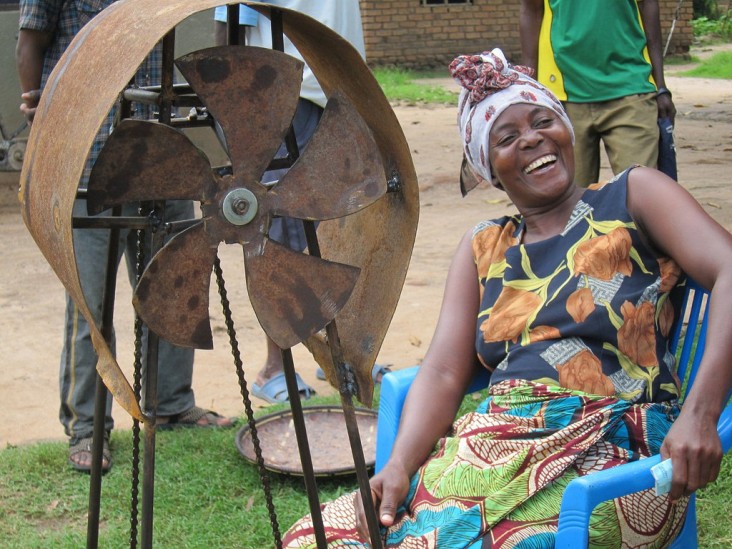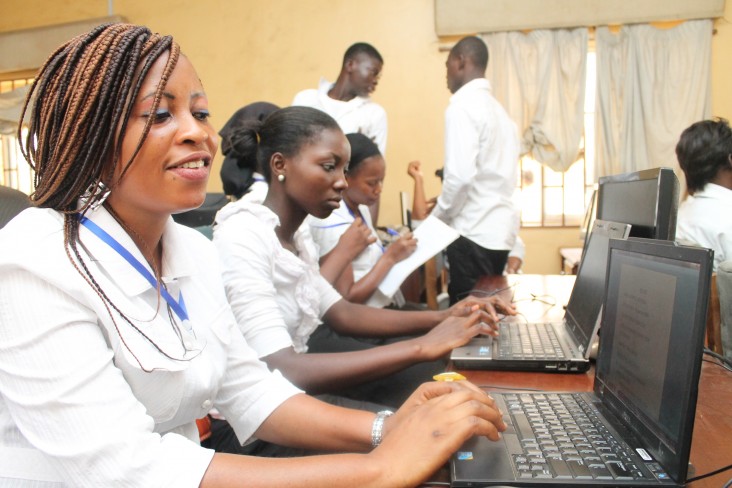- What We Do
- Agriculture and Food Security
- Democracy, Human Rights and Governance
- Economic Growth and Trade
- Education
- Ending Extreme Poverty
- Environment and Global Climate Change
- Gender Equality and Women's Empowerment
- Global Health
- Water and Sanitation
- Working in Crises and Conflict
- U.S. Global Development Lab

Women in developing countries are 25% less likely to be online than men. 200 million fewer women have access to mobile phones. And a woman is 20% less likely than a man to own a bank account. Women also remain underrepresented in science, technology, engineering, agriculture, and mathematics fields in every region of the world. The worldwide average for women’s representation in these fields is only 30%.
For the tools of science, technology and innovation to accelerate progress, they must be used to advance the social and economic equality and empowerment of everyone. Science and technology play a critical role in spurring innovation and achieving sustainable development. They have the power to create connections, foster learning, increase economic growth, and provide life-saving information. It can also help change social norms and stereotypes, and reduce inequality.
Since many of the issues related to poverty and inequality globally are felt disproportionately by women, we aim to empower girls and women to participate meaningfully in the design, research and development of tools and approaches that will address this fundamental divide. Also, when women play an active role, products and solutions are more equitable and holistic. That’s why at USAID we’re:
- Generating high quality and more tailored evidence, research and data to better understand women’s needs, problems and opportunities
- Meeting the needs of women consumers of the advancements made possible through science, technology, innovation and partnerships
- Expanding the number of women as producers of science, technology and innovation, whether as researchers, entrepreneurs, academics or business leaders

Recognizing the ability of men and women across the globe to be solvers of development problems, we are providing platforms that encourage open, inclusive innovation. We are also seeking solutions that reduce gender inequalities and empower women to be full partners, consumers and creators of innovation and technology in the service of improving lives.
- In India, Mobilise! is a program designed to prevent and respond to gender-based violence (GBV). Through our partner, Dimagi, Inc., we are deploying a mobile app for front-line healthcare workers designed to help them recognize the clinical signs of GBV during interactions with women seeking routine services like prenatal care and family planning. Once identified, the app prompts trained health workers to provide referral and counseling services for survivors to trusted and tested networks of support organizations. The use of a mobile application versus the paper-based protocols offers advantages in improved data collection, cost-effectiveness, and ease of use.
- In partnership with Land O’Lakes International Development and Massachusetts Institute of Technology’s D-Lab , USAID worked with Tanzanian women through the Feed the Future initiative to develop low-tech agricultural innovations using local materials to reduce women’s labor burden in agriculture. The prototypes include a palm oil extractor, a peanut sheller and a rice thresher -- each one greatly increasing productivity per labor hour. These technologies save time and reduce tedious work, freeing up women’s availability to engage in alternative income-generating opportunities. The program also provides women’s leadership training, promotes policies that encourage gender equality, and provides grants to scale up beneficial agricultural innovations.
- In 2011, Iraqi women represented less than 20% of mobile users for mobile operator Asiacell. A member of the USAID’s Connected Women program, Asiacell decided to design the Almas, a new line of mobile phones with unique features to meet Iraqi women’s needs such as discounted airtime and rates, freedom to choose off-peak hours during the day, and the possibility for a woman to block any number from calling or texting her to address unwanted harassment. Within two years of the product’s launch in April 2011, the proportion of Asiacell’s female customers grew from 20% to close to 40%, and about 1.8 million Iraqi women were connected to friends and family and became more socially and financially independent.
- The Higher Education Solutions Network (HESN) and Partnerships for Enhanced Engagement in Research (PEER) support women both as consumers and producers of science, technology, innovations, and research. For example, innovators supported under the Social Entrepreneurship Accelerator at Duke (SEAD) program include not only global health innovations that are designed to target key issues for women (maternal and child health, family planning, etc.) but also organizations that are, themselves, managed and run by female entrepreneurs. Similarly, PEER has supported over 30 female lead investigators and trained many more female graduate students throughout their programming efforts.
Resources
Blog: Want to Empower Women in Agriculture? Use Technology
Infographic: Closing the Digital Gender Gap [PDF, 540K]
Gender Equality in Science, Technology, Engineering, Agriculture and Math [PDF, 900K]
Bridging the gender gap: Mobile access and usage in low- and middle-income countries [PDF, 22MB]
Sylvia Ventures Traces Growth of Mobile Money in Northern Ghana







Comment
Make a general inquiry or suggest an improvement.